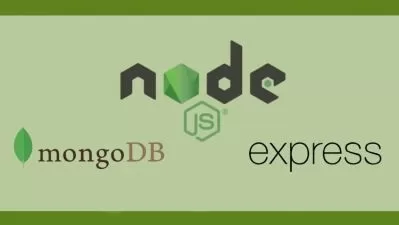How to Build Microservices with Node.js,Express.js,Axios
Bluelime Learning Solutions
1:04:32
Description
Build a microservice
What You'll Learn?
- Create a microservice
- Test and Prototype API
- Create an Express Server
- Send messages to the console
- Make API Call and fetch data
Who is this for?
What You Need to Know?
More details
DescriptionIn a microservice, each software application feature is separated from the other, in most cases with their respective servers and databases. Applications built with this kind of architecture are loosely coupled, also referred to as distributed applications.
Early on in the practice of software development, best practice involved tightly coupling all of the software’s components in what is known as a monolithic application. However, monolithic applications require extra effort to respond to changes in the system. If any particular component develops a fault, the entire system is affected.
Nowadays, we can solve the problem using microservices, which allow us to build our software product components separately. If there is a fault in one component, it won’t affect the functioning of the entire software product.
In this article, we’ll review the concept of microservices, learn how to implement a microservice with Node.js, and explore how microservices are changing the practice of software development
Imagine we’re building an ecommerce store. We’ll need models for a payment feature, cart, customers, admin, and order. Each of these features will have its own separate servers and databases.
Our ecommerce microservices will communicate with each other using the REST API framework. With our store features developed independently from each other, we can easily identify which feature to debug if our system develops a fault and avoid having to bring down the entire application.
microservices offer a better developer experience. A new developer joining the team won’t have to understand the entire code base, but rather only the features they are working on, increasing productivity.
Who this course is for:
- Beginners to microservices
In a microservice, each software application feature is separated from the other, in most cases with their respective servers and databases. Applications built with this kind of architecture are loosely coupled, also referred to as distributed applications.
Early on in the practice of software development, best practice involved tightly coupling all of the software’s components in what is known as a monolithic application. However, monolithic applications require extra effort to respond to changes in the system. If any particular component develops a fault, the entire system is affected.
Nowadays, we can solve the problem using microservices, which allow us to build our software product components separately. If there is a fault in one component, it won’t affect the functioning of the entire software product.
In this article, we’ll review the concept of microservices, learn how to implement a microservice with Node.js, and explore how microservices are changing the practice of software development
Imagine we’re building an ecommerce store. We’ll need models for a payment feature, cart, customers, admin, and order. Each of these features will have its own separate servers and databases.
Our ecommerce microservices will communicate with each other using the REST API framework. With our store features developed independently from each other, we can easily identify which feature to debug if our system develops a fault and avoid having to bring down the entire application.
microservices offer a better developer experience. A new developer joining the team won’t have to understand the entire code base, but rather only the features they are working on, increasing productivity.
Who this course is for:
- Beginners to microservices
User Reviews
Rating
Bluelime Learning Solutions
Instructor's Courses
Udemy
View courses Udemy- language english
- Training sessions 17
- duration 1:04:32
- English subtitles has
- Release Date 2024/04/13

















